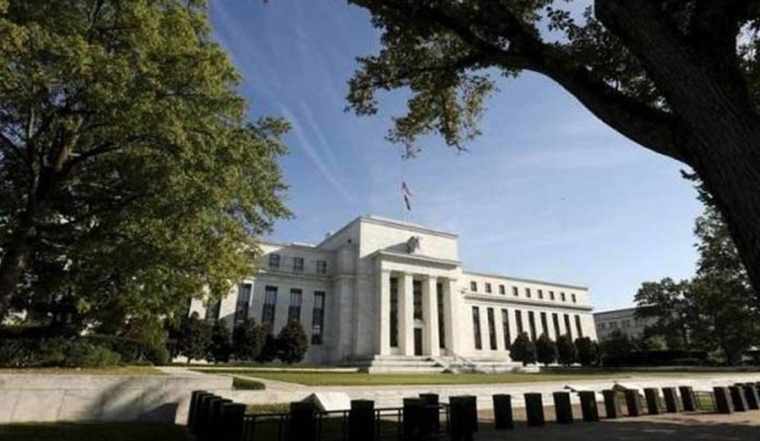
As institutional mea culpas go, the US Federal Reserve’s recent report on the events leading up to Silicon Valley Bank’s failure is surprisingly self-critical, detailed, and informative. While pointing out that SVB did not manage its risks appropriately (when its own models showed that it was taking too much interest-rate risk, the bank changed the model’s assumptions), the report also castigates supervisors for failing to appreciate SVB’s growing vulnerabilities or pushing it to fix them. The Fed also flags regulatory changes that SVB exploited to avoid closer scrutiny. But the report does not address a crucial matter: the Fed’s monetary policy.
This is partly by design: the report was intended to review the Fed’s supervision and regulation. Yet by focusing only on these issues, it ultimately ignores one of the most important factors affecting financial-sector stability. SVB was not just one bad apple. Four US banks failed at around the same time, largely because they had invested in low-yielding fixed-rate long-term bonds and loans, financed with short-term runnable deposits.
In March, the US Federal Deposit Insurance Corporation estimated that banks were sitting on unacknowledged losses of around US$600 billion on their securities holdings – a figure that rises well above US$1 trillion if one includes losses on low-yielding loans. Worse, many of these banks also have significant levels of runnable uninsured deposits. Even though they are surviving for now, their profitability is being impaired and their long-term viability as independent entities questioned as depositors demand higher interest rates.
A single bank’s aberrant behavior or one-off failures of supervision cannot explain such vulnerabilities, which are systemic. That is why the Fed has offered banks plentiful funding without the usual haircuts it demands on pledged securities, and why the Treasury has implicitly backed all uninsured deposits.
We have become so inured to massive Fed and Treasury interventions in markets that we do not appreciate how unusual and profound this latest episode has been. Could monetary policy be the systemic force that created the systemic vulnerability?
SVB’s ex-CEO, Greg Becker, seems to think so. “The messaging from the Federal Reserve was that interest rates would remain low and that the inflation that was starting to bubble up would only be ‘transitory,’” he said in a statement prepared for a US Senate hearing this month. “Indeed, between the start of 2020 and the end of 2021, banks collectively purchased nearly $2.3 trillion of investment securities in this low-yield environment created by the Federal Reserve.”
Of course, it is no surprise that Becker would blame someone else. But as Viral V. Acharya and I have pointed out, banks were absorbing a firehose of uninsured deposits as a result of the Fed’s pandemic-related quantitative easing, and it was highly tempting to invest those in (then) higher-yielding securities. Bankers made a tidy profit and secured large bonuses by ignoring the risk that long-dormant interest rates might rise. Bankers were greedy, and supervisors erred in not being alert to such greed, but was the Fed not also guilty of ignoring the foreseeable consequences of an extended period of easy money?
It would not come as a surprise if Fed officials disregarded the writing on the wall. They have a history of doing precisely that, owing to what is known in central-bank lore as the “separation principle”: monetary policy should focus on being as accommodative as possible when real economic activity needs a boost, whereas financial stability is the responsibility of supervisors. If anything goes wrong, it is the supervisors’ fault. Yet time and again, supervisors have proven incapable of addressing the massive risk-taking incentives that ultra-accommodative monetary policies create.
A recent paper provides further support for not viewing monetary policy as an innocent bystander. Analysing banking crises in 17 countries over 150 years, the Bank of Spain’s Gabriel Jiménez and his co-authors find that crises – including the US banking crisis in the 1930s, the 2007-08 global financial crisis, and the 1990s Japanese and Swedish banking crises – are typically preceded by a U-shaped interest-rate path. Short-term nominal interest rates typically decrease from about seven years prior to a crisis before starting to rise in the three years running up to it. In contrast, recessions are typically preceded by a straightforward increase in rates. It takes a prior period of easy money to precipitate banking problems.
Separationists – who dominate central banks – might not want to think about the consequences of easy-money policies for financial stability, but they cannot ignore them when they surface. Though today’s Fed insists that it is firmly focused on fighting inflation, it knows that further rate hikes will prompt more hitherto-somnolent bank depositors to demand market interest rates, which will drive up banks’ costs of funding disproportionately and create larger holes in some banks’ balance sheets. At the same time, if the Fed pauses its rate hikes prematurely, inflation could rise again, ultimately increasing long-term rates and reducing the value of bank assets. Either way, financial stability will have to enter the Fed’s rate-setting calculus.
As researchers at the Bank for International Settlements have been arguing for years, the separation principle may be correct in theory, but it is wrong in practice. If central bankers were to acknowledge this reality, they would be far more cautious about trying to stimulate economic activity through monetary policy alone. They might consider that when real investment opportunities are few (when r* is low, in central banking parlance), easy money tends to contribute more to financial risk-taking than to real investment. In these cases, monetary policy perhaps should avoid being ultra-accommodative, and central banks should eschew aggressive policies – like massive quantitative easing – that will have uncertain consequences.
Having seeded banking vulnerability with easy money for too long, central banks must be careful not to steepen the policy U-curve, overlaying rate hikes with rapid quantitative tightening. Sequencing them may be better. A first step toward fostering a healthier debate on financial instability would be to stop giving monetary policymakers a get-out-of-jail-free card whenever we round up the usual suspects.
Raghuram G. Rajan, former governor of the Reserve Bank of India, is Professor of Finance at the University of Chicago Booth School of Business and the author, most recently, of The Third Pillar: How Markets and the State Leave the Community Behind (Penguin, 2020). Copyright: Project Syndicate, 2023, published here with permission.
1 Comments
Great article.
The hitherto-somnolent depositors are waking up and moving their deposits to money market funds, where they get a significantly better rate.
The crisis is not over yet, that was merely the shot across the bow. With the FDIC and the treasury basically saying they will only look after the 8 To Big To Fail banks, anyone with money in a bank other than these is stupid not to move it. This will drain liquidity from smaller banks, who provide the majority of lending for housing and small businesses in the country. Watch the US banking system centralise into a few banks, which will then be co opted by the government in a few decades.
Lynn Alden and Caitlan Long are your go to experts on the banking situation.
I see more interesting times on the horizon.

We welcome your comments below. If you are not already registered, please register to comment
Remember we welcome robust, respectful and insightful debate. We don't welcome abusive or defamatory comments and will de-register those repeatedly making such comments. Our current comment policy is here.